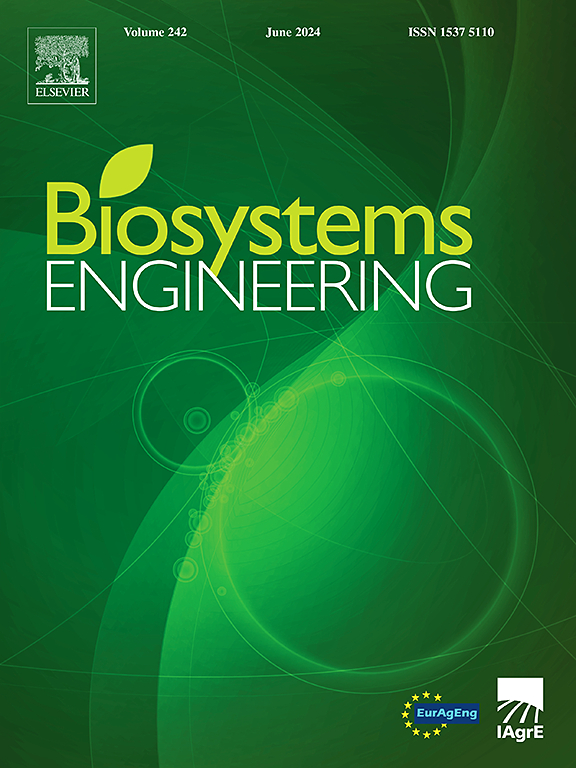DEM modelling methods and trait analysis of sunflower seed
IF 4.4
1区 农林科学
Q1 AGRICULTURAL ENGINEERING
引用次数: 0
Abstract
To enhance the application of computer-based digital simulation technology and improve the accuracy and efficiency of discrete element simulations for sunflower seeds, this study employs image processing techniques to establish an equivalent mathematical model of sunflower seed contours. A simplified discrete element modelling method based on the contour parameters is proposed. Additionally, a predictive model for the angle of repose, using a Feedforward Neural Network (FNN) combined with Response Surface Methodology (RSM), is constructed. Physical and calibration experiments were conducted to measure and calibrate the relevant physical parameters of sunflower seeds. Using the relative error of the angle of repose as the response value, the optimal simulation parameter combination was determined through Plackett-Burman, steepest ascent, and Box-Behnken tests, as well as the FNN. The results indicate that the static friction coefficient between seeds (CoSS–S), the dynamic friction coefficient between seeds (CoLS-S), and the coefficient of restitution between seeds (CoRS-S) are significant factors. The model demonstrates excellent fitting performance, showing advantages in both accuracy and stability. The optimised parameters for sunflower seeds were validated through three tests, resulting in an average relative error of 1.37% for the angle of repose, which meets the requirements for discrete element simulation.
求助全文
约1分钟内获得全文
求助全文
来源期刊

Biosystems Engineering
农林科学-农业工程
CiteScore
10.60
自引率
7.80%
发文量
239
审稿时长
53 days
期刊介绍:
Biosystems Engineering publishes research in engineering and the physical sciences that represent advances in understanding or modelling of the performance of biological systems for sustainable developments in land use and the environment, agriculture and amenity, bioproduction processes and the food chain. The subject matter of the journal reflects the wide range and interdisciplinary nature of research in engineering for biological systems.
 求助内容:
求助内容: 应助结果提醒方式:
应助结果提醒方式:


